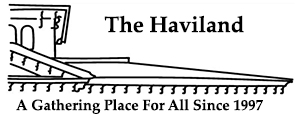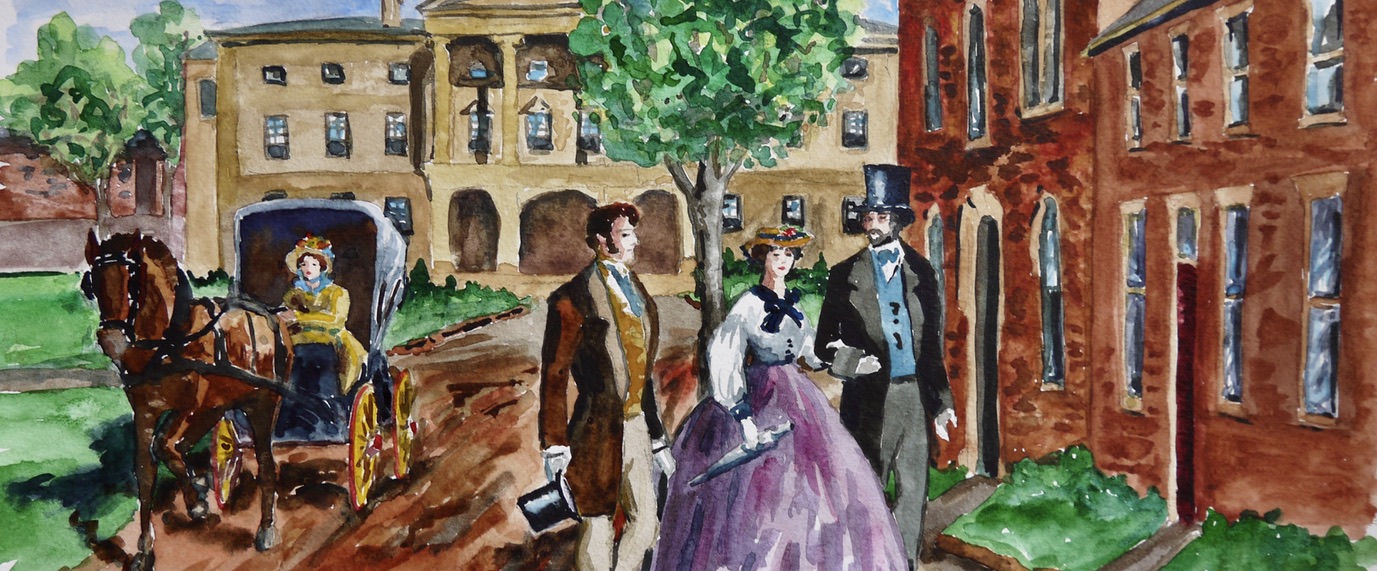
Entering the Haviland Club is like stepping back in time.
Into an era when Prince Edward Island was a thriving British colony; in the heyday of sail, on ships built here, in Prince Edward Island and boldly crossing the vast oceans. Ladies in hooped skirts and gentlemen in tall beaver hats strolled Charlottetown’s well-planned and well-thought out streets, picking their way through the ever-present red mud and dust.
Into the midst of this came Esther Full, a stylish young woman recently married to successful businessman, George F. C. Lowden. Both Esther and George hailed from Nova Scotia.
 Esther Full Lowden. A remarkable woman in any era, but particularly when genteel ladies were restricted to activities such as dancing, socializing and embroidery.
Esther Full Lowden. A remarkable woman in any era, but particularly when genteel ladies were restricted to activities such as dancing, socializing and embroidery.
The building that now houses the Haviland Club, was commissioned by her and built with money from shipping. Esther married at twenty; bore three daughters, all of whom survived well into the twentieth century; lost her husband at twenty-eight and her home by fire two years later. In 1869, the lovely Italianate structure at 2 Haviland Street, was completed, where she lived until her death in 1896.
Born in Halifax in 1836, Esther was one of three daughters of a successful merchant William Full. Esther’s shrewd business acumen, that showed up later in her life, must have been acquired by observing her father. Esther and her sisters were part of the Halifax’s social whirl, where at some point she encountered the dashing bachelor George Fesch Crowe Lowden. Seventeen years her senior, he would have seemed worldly to Esther, having made his way to and from California during its notorious gold rush. The name Fetches (Fish, Fesch) can be traced to the mother of Napoleon and the famous Cardinal Fesch.
In 1858 Esther and George were married in Halifax and sailed to Charlottetown to settle into a comfortable home, near his shipping office close to the busy wharves of a then flourishing harbour. Before relocating to Charlottetown, George had established himself as a merchant in Crapaud, Prince Edward Island. He was registered as the owner of a barque named "Rival", 1850 and a schooner named "H. Ingram", 1858 as well as having shares in three schooners “William”, 1852, the “Jenny Lind”, 1850, and “Ada”, 1858. He is often listed as a wealthy flour dealer and tobacco merchant, and savvy enough to invest in real estate thus supplementing his shipping and merchant interests.
Then suddenly in July 1864, at forty years of age, George Lowden, passed away, leaving 28-year-old Esther to raise their two young daughters, with another on the way. Despite grieving and being six-month’s pregnant, Esther took over the management of her late husband’s shipping business. Georgina her third child, was born late in September 1864.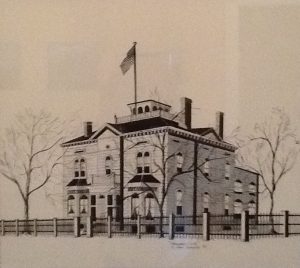
George Lowden died without leaving a will. After taking her brother’s in law to court, Esther was granted administration of the company. Her first order of business was collecting the accounts in arrears. Since the former owner was no longer around to collect the monies, some might have assumed that there was no need for payment. But assisted by Thomas Heath Haviland, a prominent and successful lawyer, Esther faced down her adversaries and won every court case. The predominantly male-controlled business community in Prince Edward Island was put on notice that Mrs. Lowden was force to be reckoned with.
Esther’s shrewd business decisions, along with the funds she acquired through lawsuits, allowed her to expand her holdings by purchasing property; avoiding the bankruptcy other ship builders went through by over-extended themselves.
Esther lost her home in the great Charlottetown fire of 1866. She had acquired a lot in a pre-eminent position, at the foot of Charlottetown harbour, looking directly out the gap to the Northumberland Strait. The Lowden property was surveyed by Henry Cundall in 1868, and construction began shortly after. By 1869 the building was described by the local press as an architectural gem.
When completed, the house would come to be known as Farringford. This lovely and impressive home would have been decorated according to Victorian fashion, filled to the brim with furniture imported from Europe, luxurious drapery, flowered wallpaper and exquisite Persian carpets.
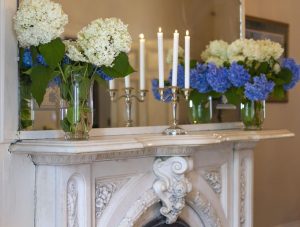 It was no small feat managing a household of this size, where food stuff was either kept in the basement’s cold storage room, in the well or by ice, cut during the winter months and kept in sheds under layers of sawdust. Everything needed for the kitchen was brought by wagons to the door. It was a different era, but a competent woman like Esther would have overseen a well-stocked, welcoming house. Considering the beautifully appointed rooms, Farringford must have been the hub of Charlottetown society. It’s easy to envision women and men waltzing to music in the Great room, dressed in the ball gowns and the regalia of the day; candlelight from the chandeliers sparkling off jewelry and cravat pins.
It was no small feat managing a household of this size, where food stuff was either kept in the basement’s cold storage room, in the well or by ice, cut during the winter months and kept in sheds under layers of sawdust. Everything needed for the kitchen was brought by wagons to the door. It was a different era, but a competent woman like Esther would have overseen a well-stocked, welcoming house. Considering the beautifully appointed rooms, Farringford must have been the hub of Charlottetown society. It’s easy to envision women and men waltzing to music in the Great room, dressed in the ball gowns and the regalia of the day; candlelight from the chandeliers sparkling off jewelry and cravat pins.
After Esther death in 1896, her son-in-law LL Beer applied to be the administrator of the estate. The family decided to put the house up for sale, but selling a mansion was difficult during the severe economic downturn that followed the collapse of the shipbuilding industry. Fortunately, Esther’s wise investments ensured the family fortune remained intact.
After two years of being on the market, it was decided to lease the property. In 1898, Delmar J. Vail converted Farringford into the American Consulate. Ships entering the harbour could not have missed the large American flag on the roof of the building. A sketch of the house at the time, and the photograph from which it was drawn, depicts the flag affixed to a thirty-foot flagpole, as well as an external walkway around the belvedere. It also shows wrought iron fencing along Haviland Street, since removed.
When the Consulate vacated the building in 1919, the estate again tried to sell the property and all its furnishing. When that failed, it was subdivided into apartments. One of the apartments remain at the back over the kitchen; a source of monthly income.
In 1932, the officers of the local Military Units decided to form a club. The first President was Lieut. Col. G. E. Full. The Army and Navy Club of PEI first rented the building and then purchased it in 1944 for $4,000. Eventually it became the United Services Officers Club of Charlottetown. The name U.S.O.C. is still displayed in different places throughout the club.
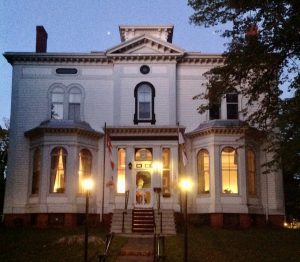 After the Second World War, companies often had their salesmen on the road. Many of these businessmen were ex-military. If they wanted to relax after work with a drink it had to be in military messes or private clubs, since the country was still in prohibition.
After the Second World War, companies often had their salesmen on the road. Many of these businessmen were ex-military. If they wanted to relax after work with a drink it had to be in military messes or private clubs, since the country was still in prohibition.
The first women members were accepted in 1983, likely due to increasing numbers of female officers in the services – although the Club was not otherwise welcoming to women. Women who played a leadership role in the city thirty years ago sometimes visit the Club and remind the members of the days, in the 1980s and earlier, when they were refused service. Unfortunately, the “male only” label has been hard to dispel. Many people in the city still think of it as a gentleman’s club.
Finally, in 1997 the United Services Officers Club became the Haviland Club, its military background remains an important and respected part of our history. Over the years a remarkable range of events have taken place here; dances and balls; jazz, blues and rock music; mystery nights; lobster suppers; Victoria Day Events; Christmas Eve and New Years’ Eve parties; and a host of other events. In its heyday during the 50’s, 60’s and 70’s, this was the premier place to socialize. Friday and Saturday night parties were crowded with the who’s who of Charlottetown.
The Haviland Club of today celebrates people of diverse cultures and all walks of life. This private not-for-profit club remains a hub of activity. Besides the amazing range of interesting people who are or have been members, the best part of belonging here is it potential for fun activities with people of like mind, a place to relax somewhere outside the home that is welcoming and friendly, and being able to access the resources both of talent and connections offered by being a member.
The building also offers its beautiful rooms at reasonable rates, for wedding receptions, anniversary and birthday parties, workshops, meetings and presentations. Each week, two bridge clubs hold games for more than a hundred players.
The Haviland Club members have worked tirelessly to care for this magnificent heritage building, maintaining the legacy that stands as tribute to the remarkable Esther Lowden and her lovely home built over 150 years ago.
Read more in the recently published book “Esther of Farrington - a woman ahead of her time” by Lynne Thiele. On sale at the Haviland Club $15incl. tax - proceeds to the Haviland and Bridge Clubs.
Read more about the United Services Officers' Club of Charlottetown
